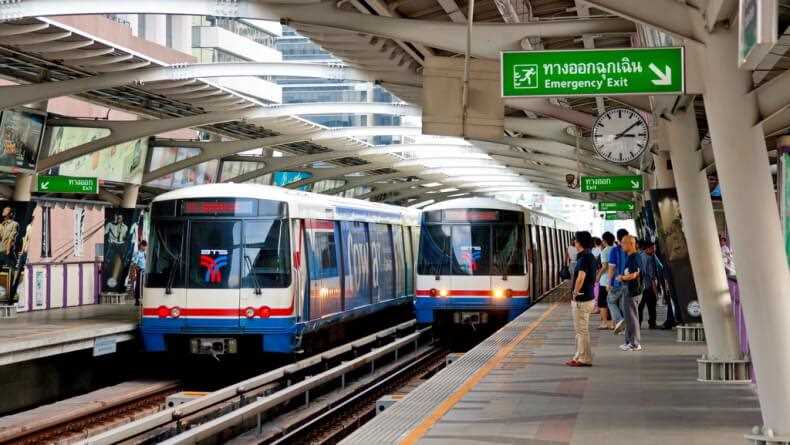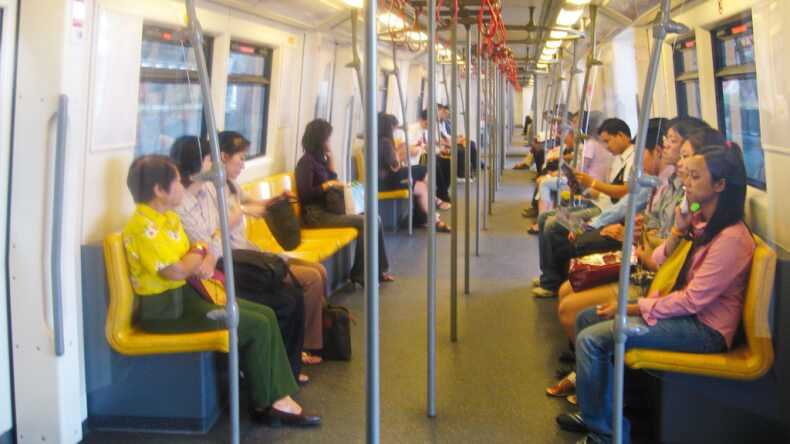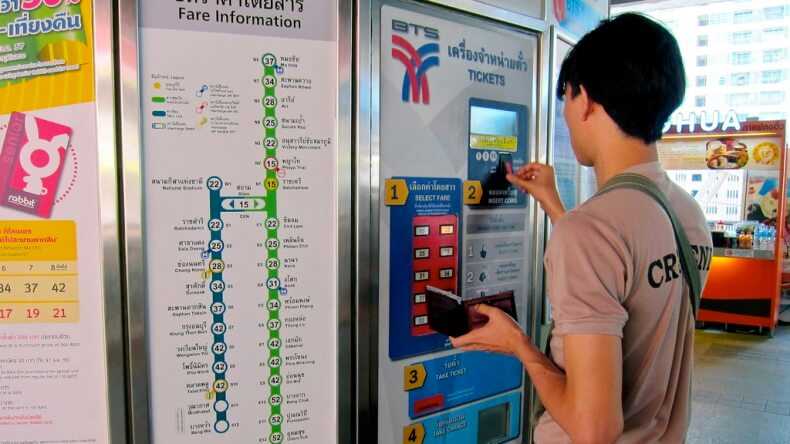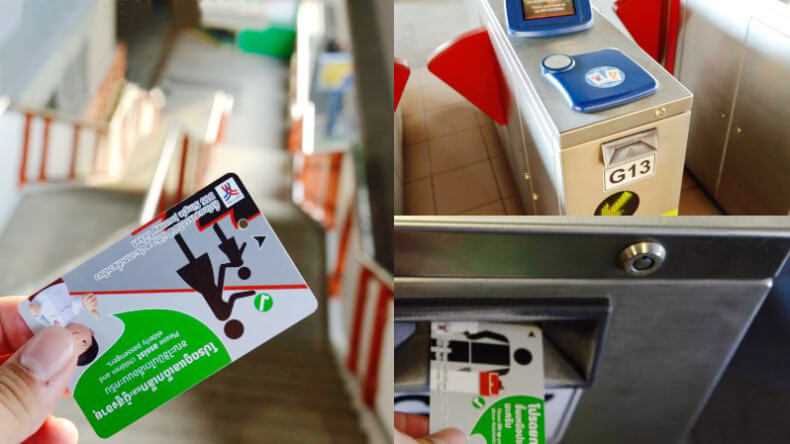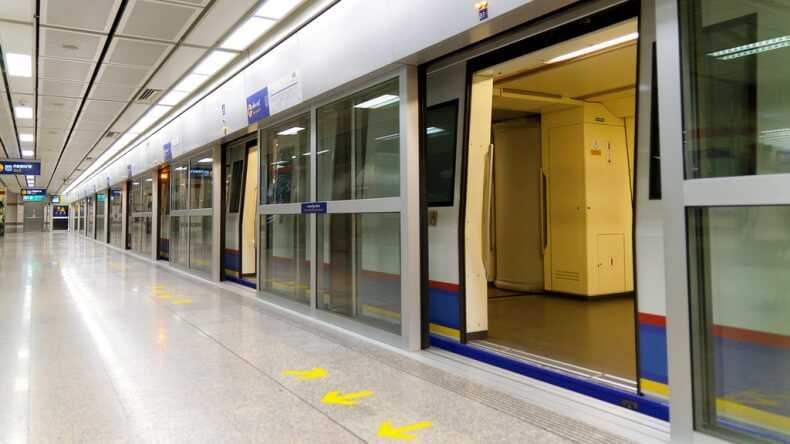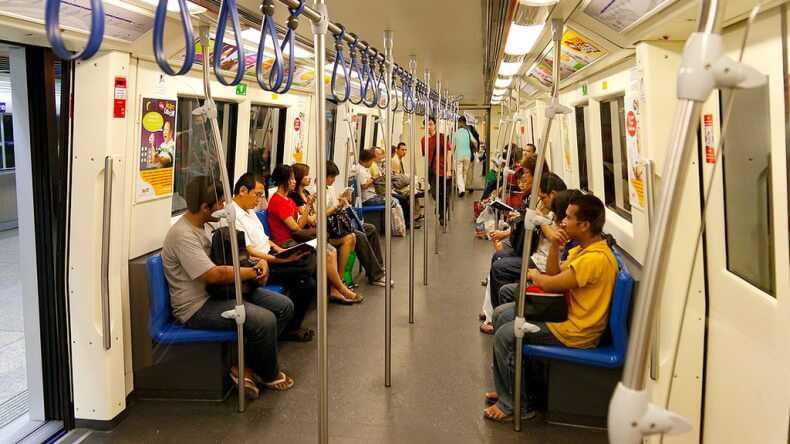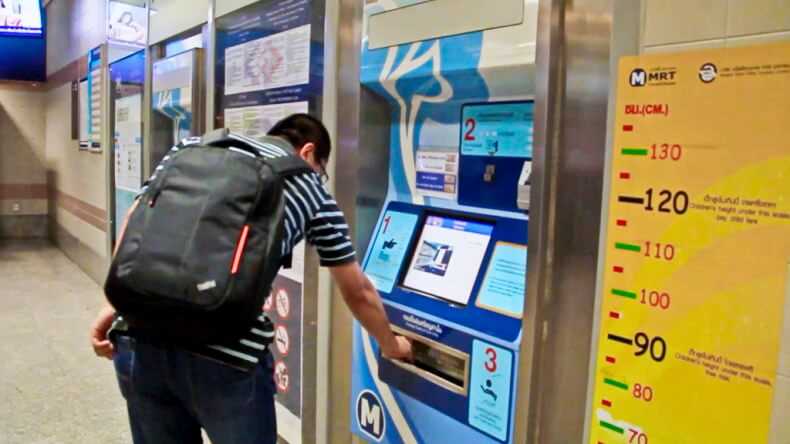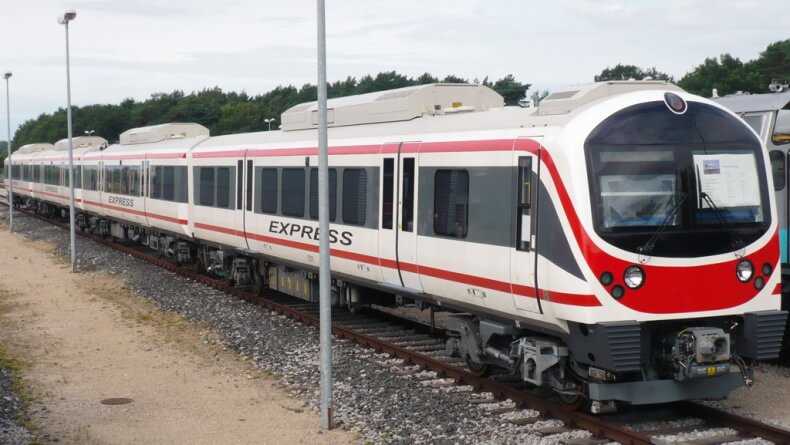The first subway train ran on trestles over the Chao Phraya (Menam) River not too long ago – in 1999. This mode of transport spared a metropolis that was rapidly developing but chaotically built up from the threatened traffic collapse. As in the rest of the world, metro Bangkok – is the most convenient way to move in a human anthill, allowing you to get to its remote corners, avoiding traffic jams. Read about How to use Bangkok’s Metro and not to get lost in it in this article.
How to use the Bangkok Metro and not to get lost in it.
Bangkok Metro Scheme
The subway in the Thai capital consists of three independent but overlapping types of rail lines at some stations.
Sky Train is the subway, designated on all city diagrams as BTS. It is laid above the ground, partly on high trestles, and consists of two lines – Sukhumvit Line, which is assigned a light green color on the diagrams, and Silom Line (dark green).
- MRT is Bangkok’s classic subway, consisting of one (dark blue on the map) line.
- ARL and City Line is an elevated rail line from Suvarnabhumi Airport to Phaya Thai Station, which we think of as a commuter train. It is shown in red on the map.
Bangkok Metro Map
Bangkok Sky Train (BTS Sky Train)
Bangkok Sky Train (go to site) is a source of pride for the Thais. They built it themselves, refusing the services of a Canadian company. It can be used not only for traveling around the city, but also as a kind of sightseeing tour. However, you have to choose the last or the first car, since all the other windows are almost entirely covered with advertising.
Worth noting that the Thinese are not proud of their “Heavenly Train” for nothing. Its cars, which are slightly wider than conventional subway cars, are equipped with air conditioning, LCD screens (show commercials and music videos), they move smoothly, without jerks. Stations are announced in Thai and dubbed in English.
Inside the BST cabin
The BTS farangu elevated subway line layout is the easiest to figure out. Each station name is duplicated with letter letters indicating their position relative to the sides of the world, and a number, by which you can judge how far (in kilometers) it is from the city center. The Sky Train junction station, Siam, where you can change from dark to light green line, is marked as CEN. If you want to get to the center of Bangkok’s nightlife, look for S2 (Sala Daeng) on the dark green line. And you can go to the airport by transferring to the City Line at station N2 (Phaya Thai).
You can also go to the airport by transferring to the City Line.
Tickets for the Heavenly Train are sold in three types:
- reusable tickets
- valid for the day;
Monthly subscriptions.
Disposable ticket
Day ticket
Single ticket
The cost of a single ticket (Single Journey Ticket) on the BST depends on the distance. You don’t have to count it, the stations are designed so that there is exactly 1 kilometer between them. You buy a ticket for the number of stations you are going to pass. The minimum price is 15 baht and the maximum is 52 baht.
You can find out the current price by going to official website of BTS and clicking on the stations you are interested in on the map. In response you’ll get not only the fare, but also the approximate time to travel between them. Journey time is indicated for a reason – a single ticket is valid for two hours, but how many hours the passenger actually travels is determined by the machine at the exit of the station, to which you must show the ticket. It is not allowed to lose it, as well as to exceed the term of the trip. The fine for this starts at 40 baht.
Terminal to pay for the elevated subway
Day pass
You can get rid of calculating time and distance by purchasing a Day Pass (One-Day Pass). The price is 140 baht. Please note that the pass is only valid on the day of purchase. So there is no point in buying it at 23:00: Metro Bangkok is open from 6:00 AM till 00:00 AM.
The BST toll turnstile
Fare-per-month
The BST Monthly Pass, called the 30-Day SmartPass, is a very tricky item. Purchasing it does not entitle you to stay, for a month, on the Sky Train. With it you can only make a fixed number of trips – a minimum of 15, a maximum of 50 – in 30 days. Pass for 15 trips costs 345 baht, and for 50 – 900 baht. There are also gradations of 25 (525 baht) and 40 trips (760 baht). To determine the profitability of the purchase of such a pass, divide its cost by the average duration of one trip you usually take. In practice it is already determined that the pass for 15 trips will be profitable only if you will travel at least three stations at a time.
Bangkok Underground Tube (MRT)
Bangkok Underground Subway (go to site) is a good way for travelers to experience the daily life of the Thai capital. It is used by natives to make the daily commute from home to work and back. The architecture of the stations is utilitarian, with no architectural frills. The train tunnel is separated from the central concourse by transparent sliding doors. At transfer hubs, stations have two or even three levels.
It’s convenient that both MRT terminus stations – the southern Hua lamphong and the northern Bang Sue – are close to Bangkok’s main train stations. Lat Pharo Station provides access to Bangkok’s old Don Mueang Airport terminal, where most of the country’s domestic airline flights depart from.
Purchasing tickets for Bangkok’s underground subway must be done separately. They differ both physically and in time of validity – a token is issued for a single trip, which is valid for an hour and a half, not two.
The tickets are issued for a single trip.
Inside the MRT cabin
The assortment of MRT ticket types is more diverse:
- reusable tokens;
- accumulative card;
- day pass;
- ride pass for 15 and 30 days.
Single-use tokens
The cost of single-use tokens underground is slightly higher, at the time of writing it was 16 baht for a single trip. But the maximum price (from terminus to terminus) ends up being lower at 40 baht. There are discounts for children on the MRT, with tickets being exactly half the price.
Disposable tokens
Savings card
The Stored Value Card of the Bangkok Underground does not give the passenger any monetary benefits, it only saves the passenger from having to buy a ticket at the ticket office before the trip. It costs at least 230 baht, of which 30 – the card issuance fee. Of the remaining amount 150 goes to pay for the fare, and 50 remains on deposit, from which the fines are usually removed. The card can be topped up with a fixed amount of 100 baht. For children (under 14) and the elderly (over 65), there are savings cards sold at a discounted rate.
Day pass
This entitles the passenger to use the subway from the time it opens (at 6:00 am) until it closes (at 00:00 am). It costs from 120 baht. Do not consider that you can ride with it all day without going up to the surface. One ride should not exceed 90 minutes. Otherwise you will be fined 40 baht. Although you can go out and come back in again.
The MRT payment terminal
15- and 30-day season ticket
It is similar to the day pass, but it can be either 15 days (15-DAY PASS costs 600 baht) or 30 days (30-DAY PASS costs 1400 baht).
The rules on the Bangkok underground line are the same as those on the elevated line. The ticket is presented at the exit. If the single token is paid to a different distance station (even a closer one), you will not be let out. The fare card is deducted on exit (don’t forget to put it to the reader on the turnstile). Exceeding 90 minutes is punishable by a fine of 40 baht. That’s enough time to ride the entire dark blue line from end to end.
Bangkok Airport Metro (ARL)
Bangkok Airport Metro (go to site) is for those getting from Suvarnabhumi Airport on their own. In a quarter of an hour you will be in the center of Bangkok. The entire trip from the air harbor to the Phaya Thai station costs 45 baht. One ride is 15 baht (current prices can be calculated on the official website). Tickets are sold by vending machines, which are available at each station. There are two types of lines:
- Express Line – route from Makkasan station to the airport without stops.
- City Line – from Phaya Thai to the airport with stops at each station.
- Don Muang Airport in Bangkok – Important details for tourists!.
- The best hotels in Bangkok are in the center, near the airport, and with pools!.
- Pattaya Bus Stations – Thappraya, Nakhon Chai, Nua Bus Stations.
- How to get from Bangkok to Ko Chang quickly and cheaply.
- How to buy a train, bus or ferry ticket in Thailand.
- 10 most popular airports in Thailand among tourists.



